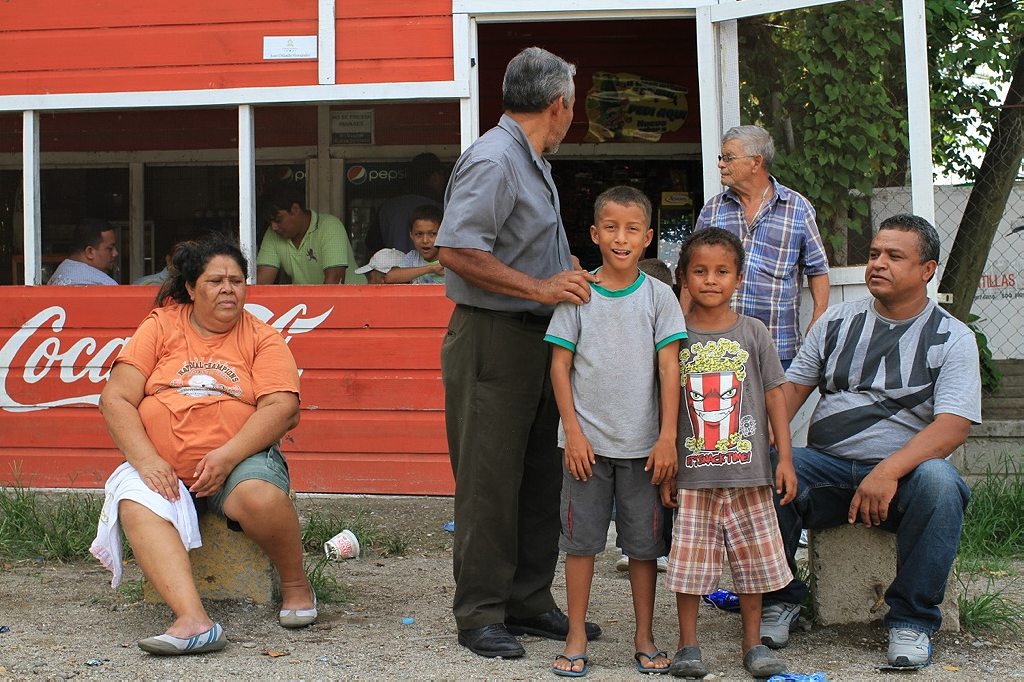In Honduras’s most violent city, fear and despair fuels an unwelcome exodus to the U.S.
With the morning sun still rising into the sky, most of the local thugs haven’t arrived to stand watch by the taxi stand at the entrance to the settlement. Jennifer Garcia, a heavy-set 22-year-old mother of three, coddles her baby in her arms and swings back and forth in a hammock behind her house in La Paz, a gang-controlled neighborhood on the outskirts of San Pedro Sula, Honduras’s most violent city.
Garcia, like thousands of other young people in similar neighborhoods across Central America, has abandoned plans to build a life for her family in her home country and is planning to migrate north to the United States. She hopes to join her husband and four-year-old son in Texas. Her calculus is relatively simple: “I’m here alone, without work,” she says.
The neighborhood gangsters have made life impossible. Most days, the maras (gang members) wait by the entrance of the neighborhood, vigilantly watching who comes and goes. For Garcia and tens of thousands of other Hondurans, the threat of violence and absence of economic opportunities are two of the major push factors that drive migration. At the same time, the prospect of reuniting with family in the U.S. continues to serve as a pull factor that augments the northward exodus even as the U.S. works to bolster security at the Mexican border. In 2014 the U.S. border patrol detained 257,000 non-Mexican migrants, the overwhelming majority of which came from Central America. It’s a trend that isn’t likely to disappear any time soon, as families riven by two decades of migration continue to try to reunite in the United States.
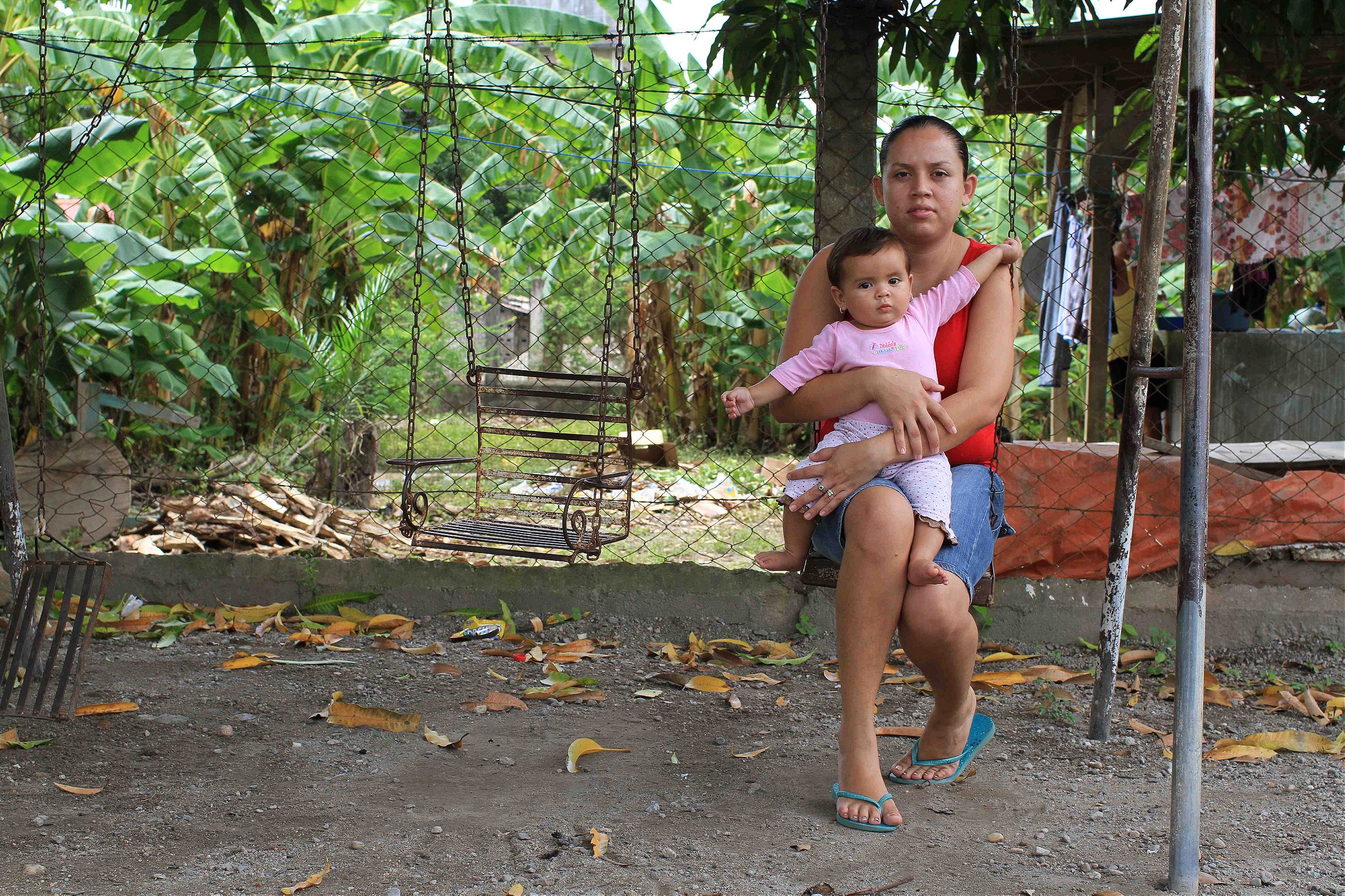
For people like Garcia, life in Honduras has simply become too difficult. An old railroad track that once carried bananas grown by U.S. fruit companies toward the coast separates La Paz from the neighboring community of Colonia Pineda, a barrio where Garcia’s mother-in-law lives and where her son’s elementary school is located. The neighborhoods feature the same dirt roads and non-descript single-story cement houses but are marked by one critical difference. “This is MS-13 [territory] and there it’s [Barrio] 18… two gangs that don’t get along. Nobody here can go there. They just hacked an 8-year-old with a machete,” Garcia says.
A few weeks earlier, three young men arrived to a house across the street. They had been deported from the U.S., and after arriving in San Pedro Sula, they showed up at the house of a distant relative. The neighborhood gang, however, was unnerved by their arrival. “Ten guys with guns came and made them lift up their shirts to looks for tattoos. [The gangsters] had AK-47s and pistols,” Garcia explains.

As usual, the thugs didn’t wear masks or try to conceal their identities. On that particular occasion, the gang decided that the interlopers didn’t pose a threat and let them leave, but other residents haven’t been as lucky. Swinging in her hammock and gently patting her baby’s back, Garcia adds, “The police are scared of the gangsters.” When the thugs killed a neighbor, “they came in with guns and they killed him and they left walking like nothing happened. They know there’s no justice.” In Colonia Pineda the thugs killed a visiting man inside of a church just to send a message that outsiders aren’t welcome.
For Garcia, migrating to the U.S. has become her priority. “There’s no work [here] and there are so many thieves. You can’t even go to the store because they’ll assault you,” she explains.
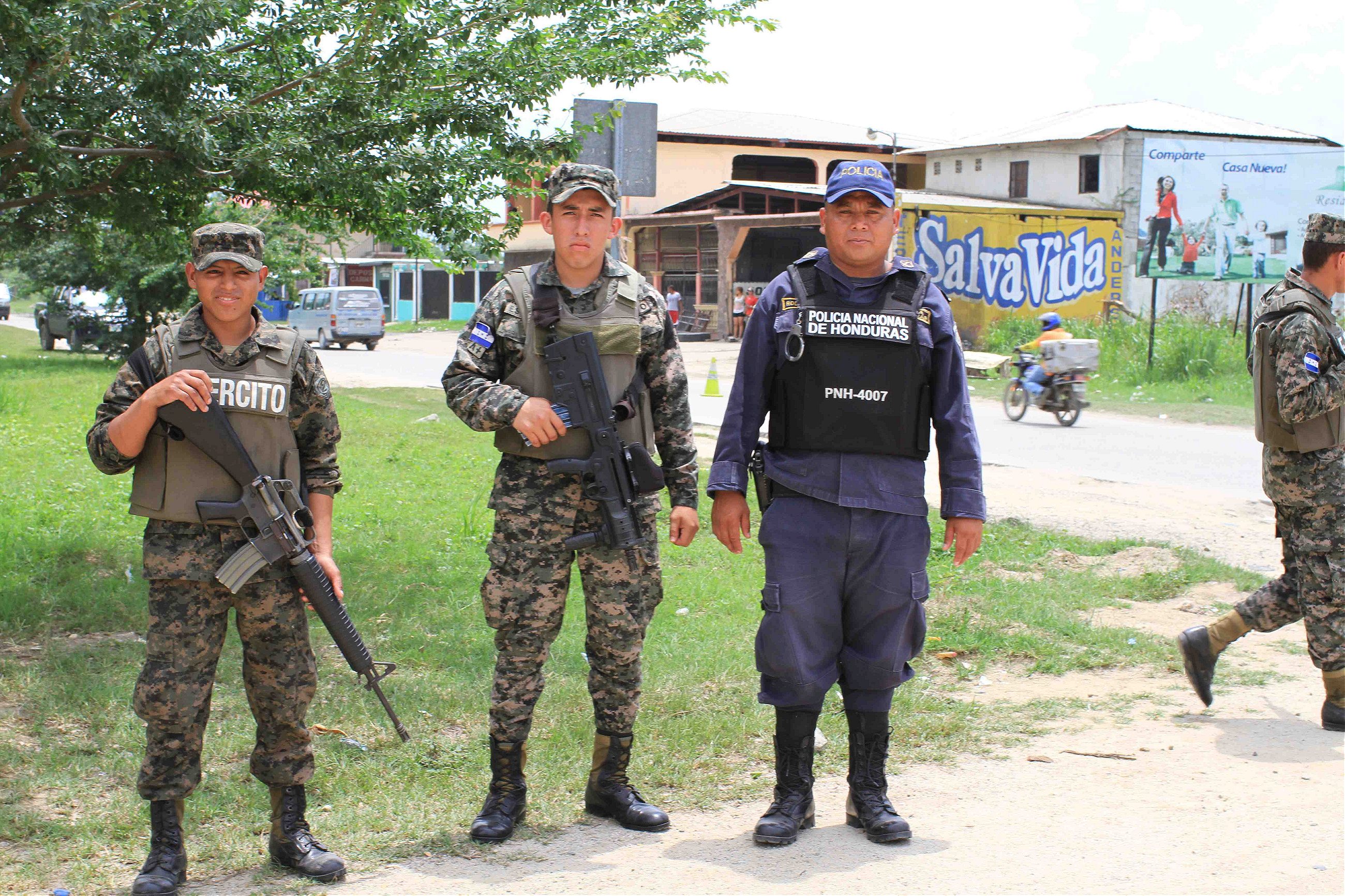
Honduras’s problems are a complex blend of poor governance, limited economic development, and poverty. While many residents see crime as the problem and immigration as the solution, some observers also see the cycle of immigration as part of the problem.
Riding in the passenger seat of a low-slung Nissan police patrol truck, officer Cesar Jhonson, a 22-year-veteran of the police force in the mountainous coffee growing state of Comayagua, a three hour drive inland from San Pedro Sula, looks out at the fog-shrouded hills surrounding his city.
As the patrol truck eases around a narrow dirt road, passing a group of fishermen walking through the mist carrying their haul, Jhonson muses that if the government really wants to help, “they should create more opportunities so people have good jobs. That would slow the migration to the United States.”
Gangs ravaging urban areas in Central America were formed in Los Angeles
In Jhonson’s mind, even if immigration helps some individuals escape crime-plagued neighborhoods and find better-paying jobs, at a societal level the resulting breakup of families is part of the problem. Immigration is “one of the main factors that leads to the disintegration of families. That’s the root cause of the formation of these gangs that are causing so much harm in Honduran society. So we need to create more opportunities,” he says.
Looking up a narrow, rock-strewn trail that separates two rows of faded, pastel painted cement and wood-slat houses, Jhonson adds, “Comayagua is beautiful, it just needs more sources of employment.” Jhonson thinks that at the most basic level, Honduras’s current problems stem from the deleterious side effects of the cycle of immigration and deportation. “The origin of the marasalvatrucha [gang] is in the U.S.,” he explains, noting that the MS-13 and Barrio 18 gangs that are ravaging many urban areas in Central America were formed in the streets of Los Angeles and hardened in California’s prison system. “They started these problems in the U.S. and the U.S. government started deporting them and they came here.”
The returning gang members quickly formed their own groups in their hometowns in El Salvador, Honduras, and Guatemala and dramatically increased local crime rates. In San Pedro Sula, Honduras’ biggest industrial hub, a city filled with factories and fast-food franchises, known for being the most violent metropolis on the planet, police patrol alongside soldiers in military-style units.
Even in sleepy, colonial Comayagua the police have been forced to upgrade their weaponry and change their tactics. “We use SAR rifles,” Jhonson explains, naming the futuristic looking assault rifle that he and his officers now employ. as the patrol truck passed a row of small houses. “If we go up to the mountains we always bring big guns.” Jhonson says that while around Comayagua the biggest threat is common crime rather than deadly gang assaults, in San Luis, a town in the mountains, “there are other crimes, it’s more organized. There are gangs that are dedicated to murder.”
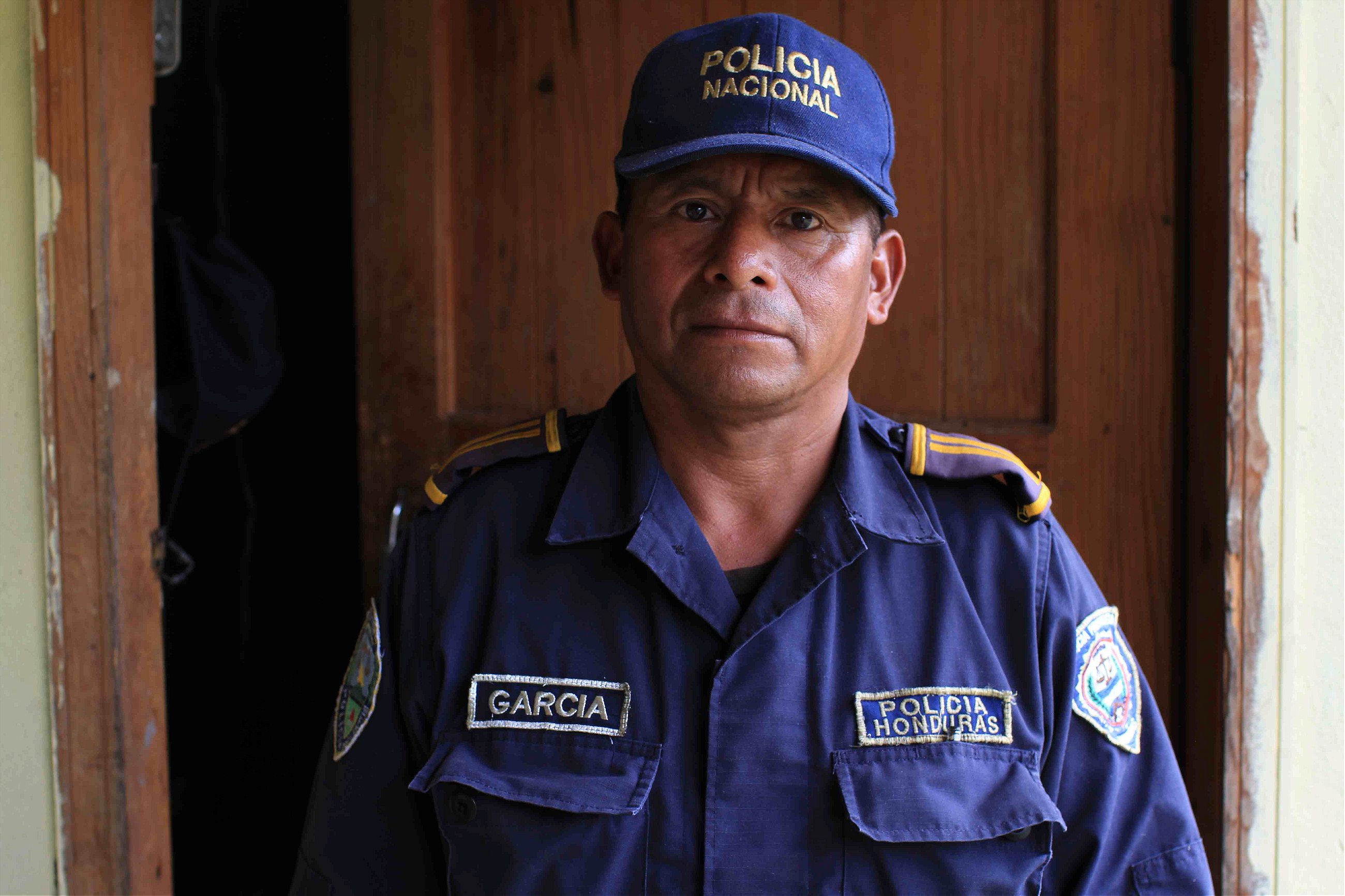
San Luis has earned a reputation for being one the most problematic municipalities in Honduras. Over the last few years Jhonson has seen colleagues die during shootouts with a gang of armed mountain men in towns such as Tablon, San Luis, and Esquia.
Still he says, the roots of the problems Honduras faces are social and economic. “The solution isn’t a military police. We need to prevent young people from joining gangs.”
In many of the tiny towns in the hills around San Luis, residents don’t have police stations to visit when they need help. Marina, a resident of a village called Playon, an hour’s drive into the hills surrounding the city of Comayagua, knows that gunmen from a local gang assaulted a neighbor’s coffee processing plant. They killed one of his employees and badly wounded his son. Her father-in-law, a coffee farmer, was also shot and killed after he refused to pay off the gangsters.

Sitting on her mother-in-law’s back porch, down the hill from the spot where her father-in-law was killed, she explains that her husband left for Louisiana a year ago. “I wanted to go too. I was more scared of living here than the trip through Mexico.” Marina had previously lived in Boston and knows about the dangers of crossing. “The dangerous things of the trip are getting kidnapped—that they’d kill me or rape me, but at the same time those things could happen here,” she says. Unlike many migrant mothers, Marina decided to come home to Honduras. “I liked it a lot [in Boston] but I had two kids here and I wanted to come back for them.”
Marina’s son Steven was born in Boston. “He’s a [U.S.] citizen,” she explains. Marina has both Honduran and U.S. flags hanging in the small garage next to her house. “I love the U.S. I want to go back but I don’t know how,” she says.
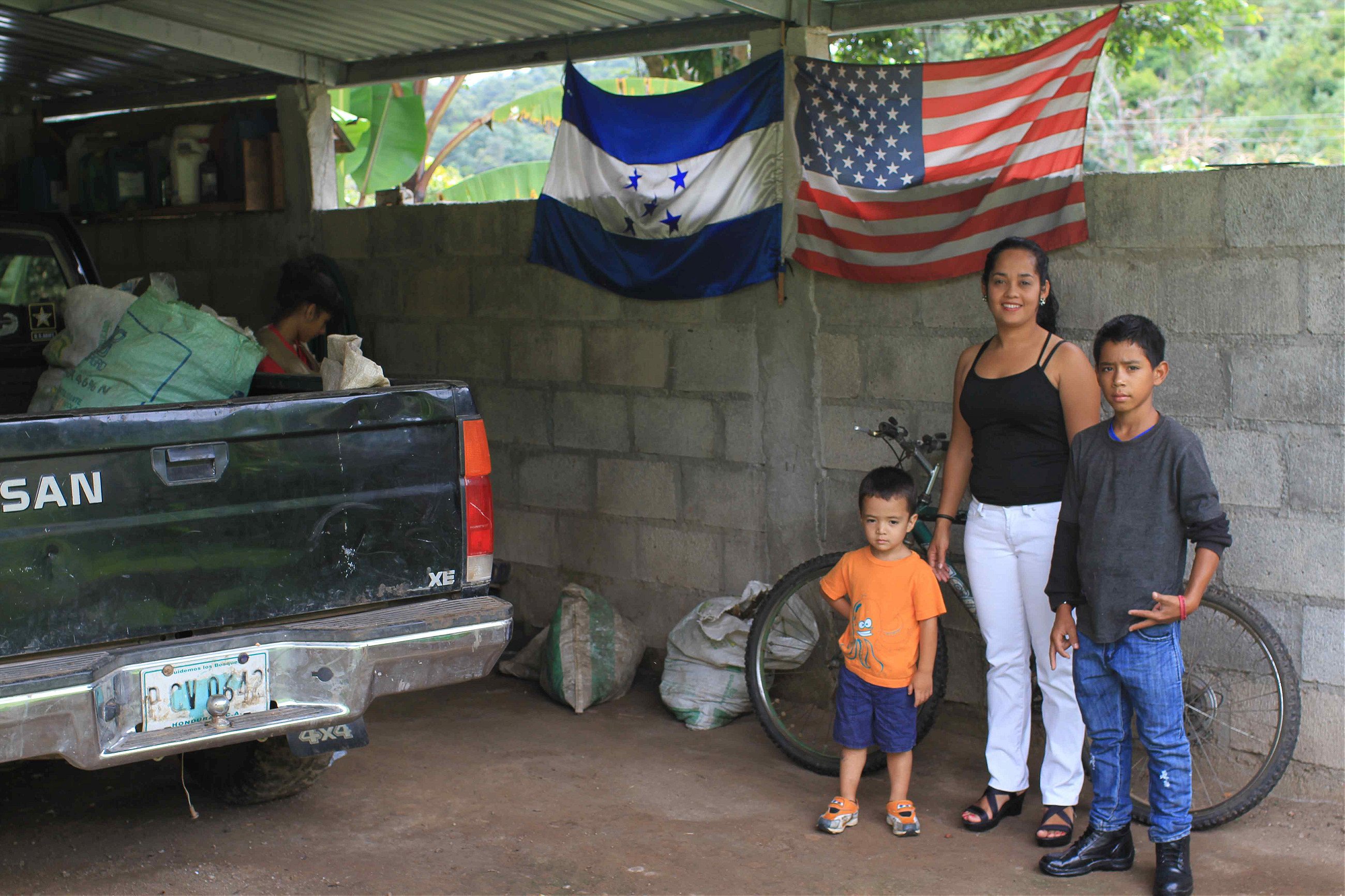
The challenge for people like Marina is that passing though Mexico and getting to the U.S. isn’t as easy as it used to be. Obama’s 2015 budget includes $120 million to help Mexico beef up security at its southern border and detain more would-be migrants before they ever reach U.S. soil. At the same time, Obama has deported more undocumented migrants than any other president in U.S. history. Plane loads full of detained migrants arrive back in San Pedro Sula daily.
Dora Melara, a legal advisor who works with the recently arrived deportees, tells me about two flights arrive each day carrying a total of 100 to 135 people. “Some were captured on their way in and others had been living there for a while before being detained,” Melara says. The first thing the migrants see when they return is a brightly painted bus that features an silhouette of a family holding hands and in big yellow letters the words, “Your home, your future: Honduras.”
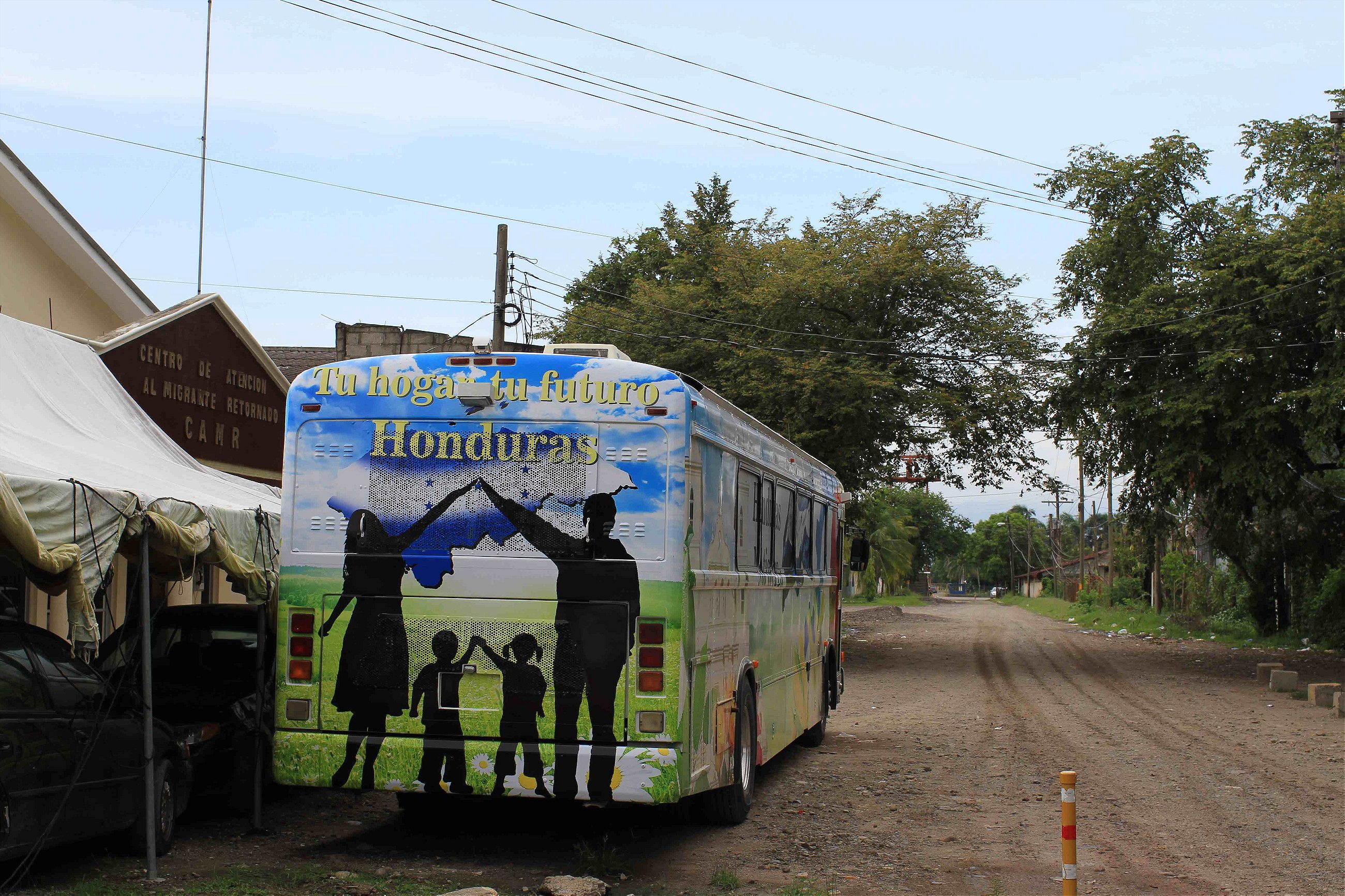
Outside the Centro de Atencion del Migrante Retornado, a group of people waits to greet deported relatives. One man, Gamaliel Castro, 43, waits for his brother. “He went four years ago. They deported him and when he went back they sent him to prison for trying to re-enter,” Gameliel says.
Castro’s uncle, a gray-haired 62-year-old named Domingo, chimes in: “Here the situation is harsh. Young people leave because there’s no work and there’s violence. If one person goes then his brother will go, too.” It’s a situation that splits families between the U.S. and Honduras and is further complicated for people like Domingo’s nephew who have children in the U.S.
Domingo knows that his nephew is determined to try to make it back to the U.S., even if there’s a risk that he’ll be detained and sent back to prison again.
He doesn’t expect his nephew to stay long in Honduras. “If he loves his son, he’ll go again.”
